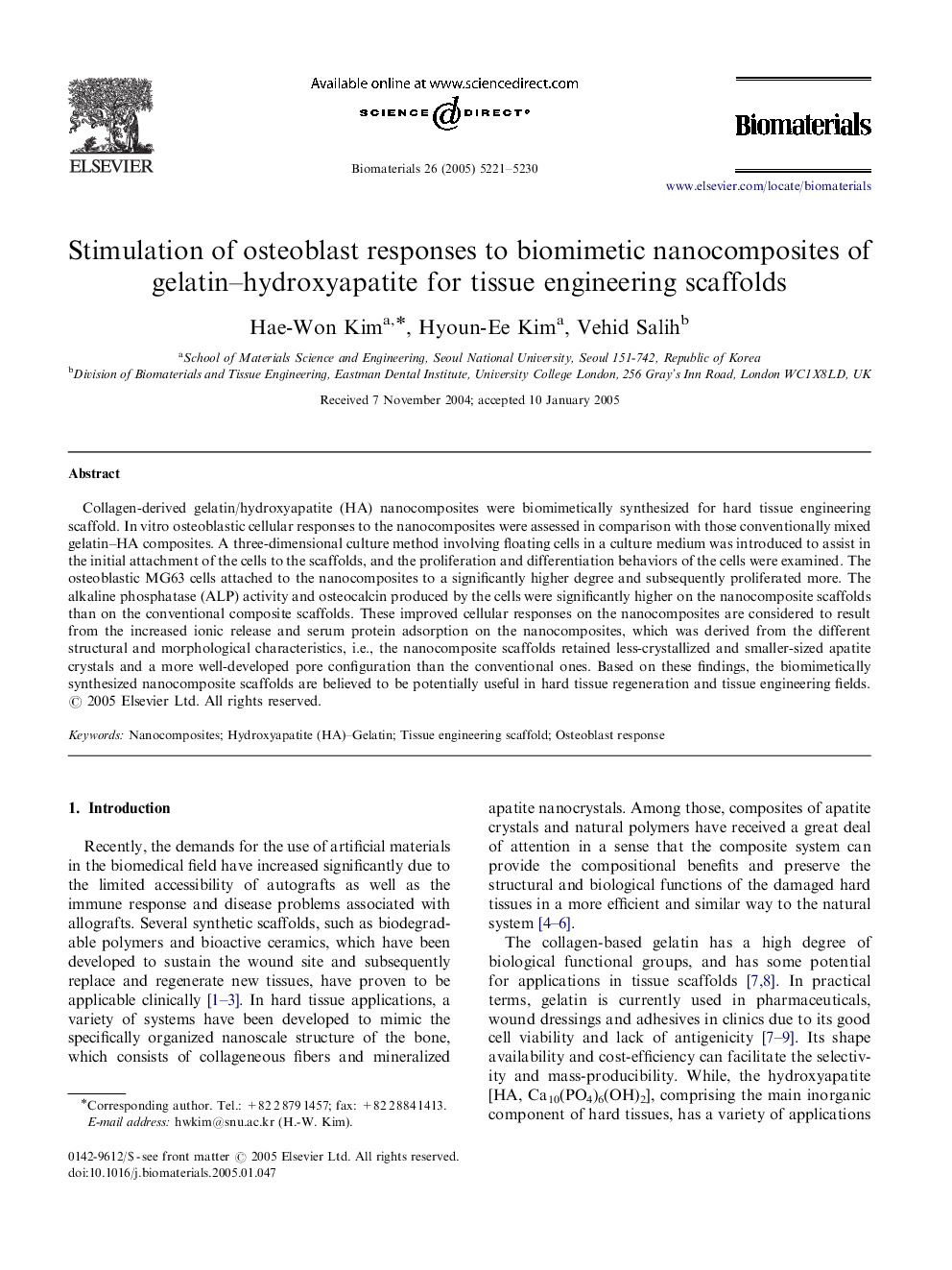| Article ID | Journal | Published Year | Pages | File Type |
|---|---|---|---|---|
| 12320 | Biomaterials | 2005 | 10 Pages |
Collagen-derived gelatin/hydroxyapatite (HA) nanocomposites were biomimetically synthesized for hard tissue engineering scaffold. In vitro osteoblastic cellular responses to the nanocomposites were assessed in comparison with those conventionally mixed gelatin–HA composites. A three-dimensional culture method involving floating cells in a culture medium was introduced to assist in the initial attachment of the cells to the scaffolds, and the proliferation and differentiation behaviors of the cells were examined. The osteoblastic MG63 cells attached to the nanocomposites to a significantly higher degree and subsequently proliferated more. The alkaline phosphatase (ALP) activity and osteocalcin produced by the cells were significantly higher on the nanocomposite scaffolds than on the conventional composite scaffolds. These improved cellular responses on the nanocomposites are considered to result from the increased ionic release and serum protein adsorption on the nanocomposites, which was derived from the different structural and morphological characteristics, i.e., the nanocomposite scaffolds retained less-crystallized and smaller-sized apatite crystals and a more well-developed pore configuration than the conventional ones. Based on these findings, the biomimetically synthesized nanocomposite scaffolds are believed to be potentially useful in hard tissue regeneration and tissue engineering fields.
